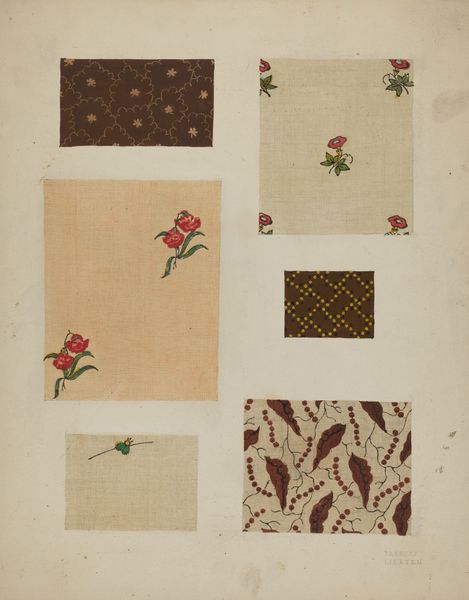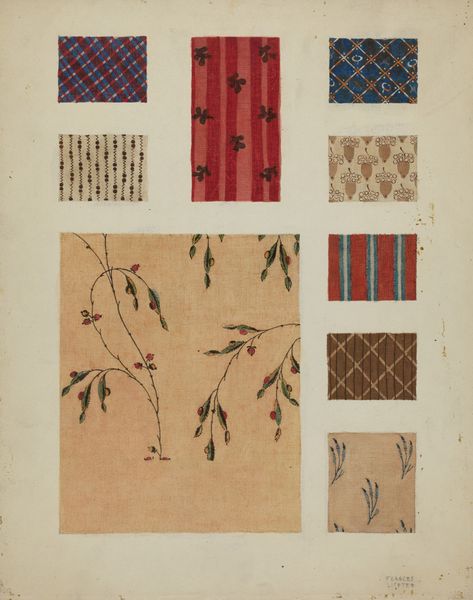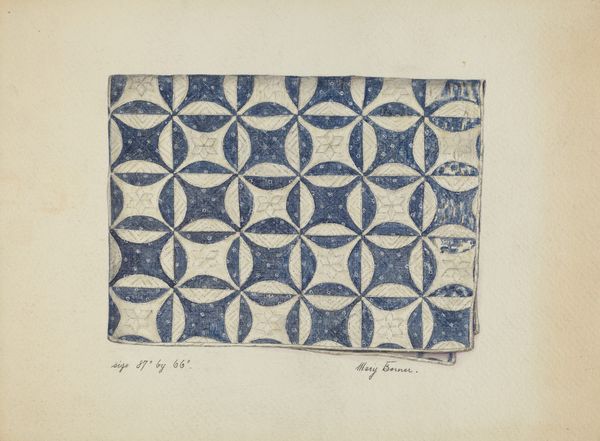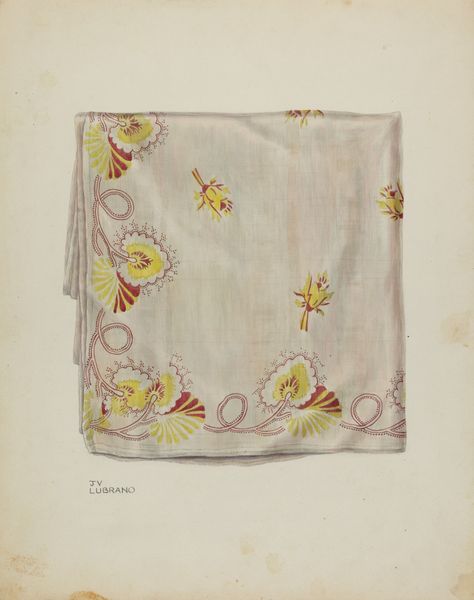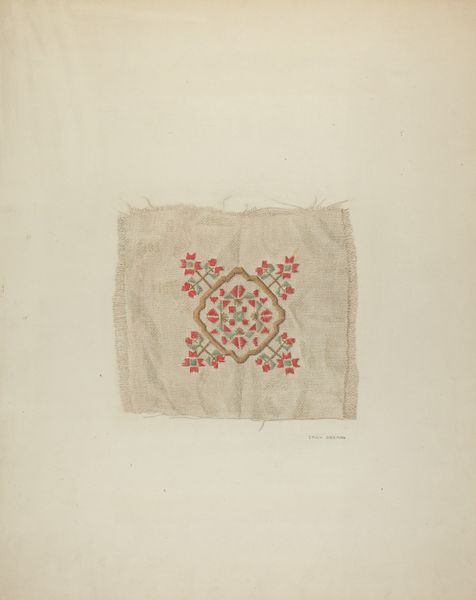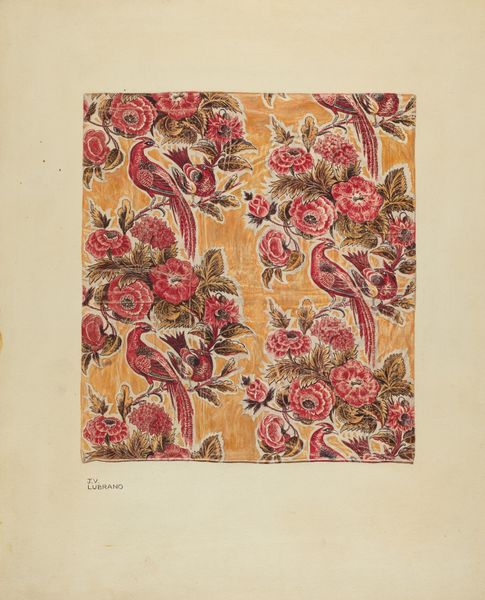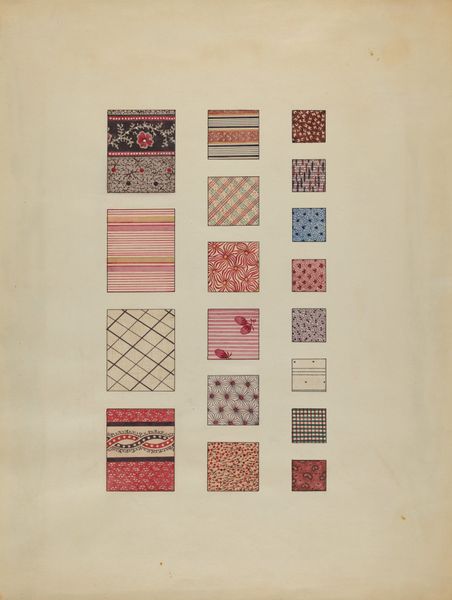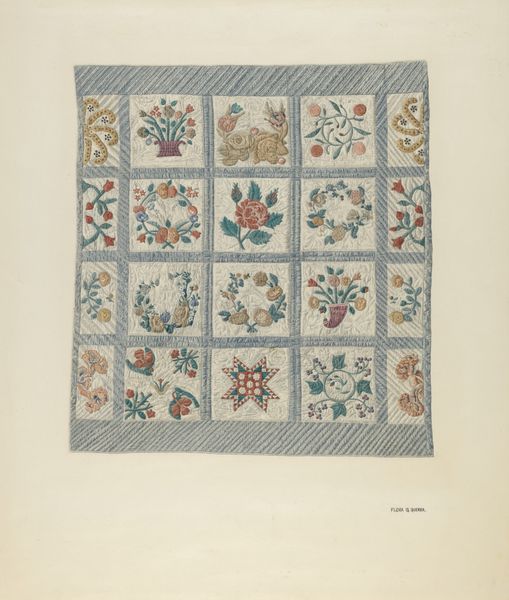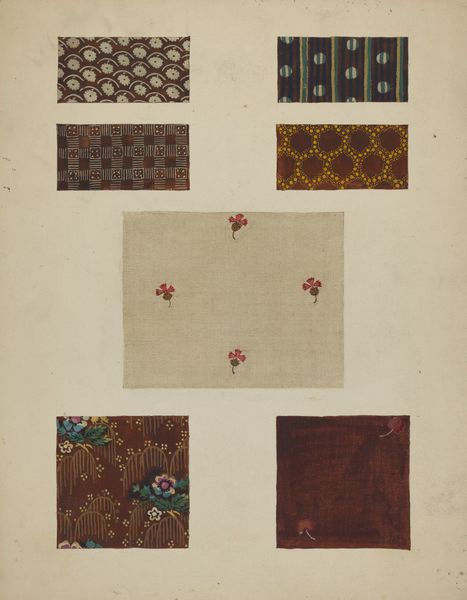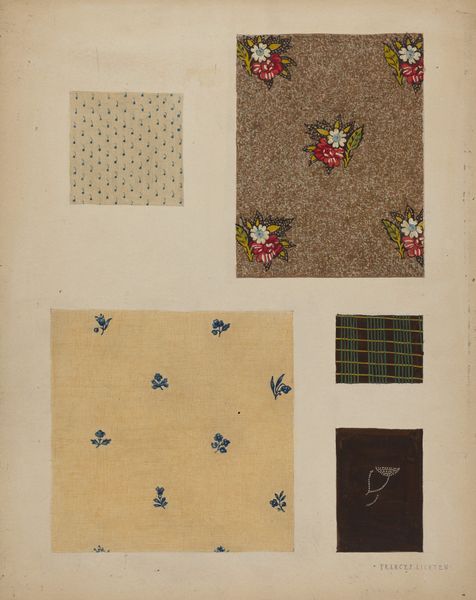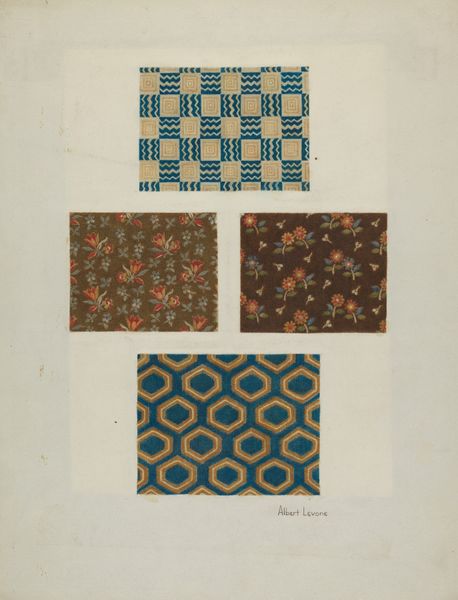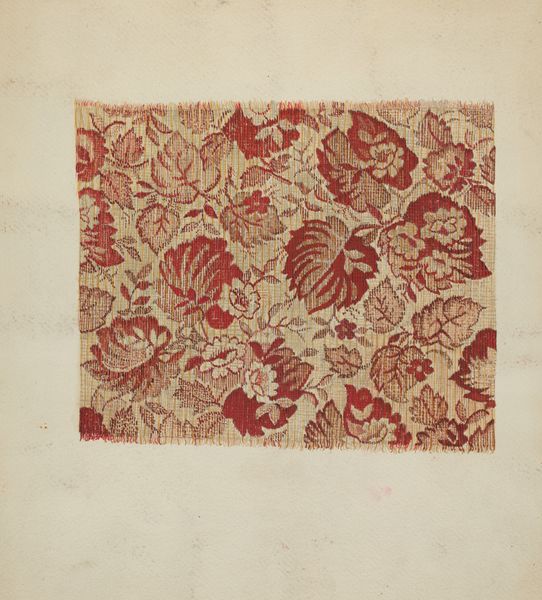
drawing, paper
#
drawing
#
water colours
#
paper
#
watercolour illustration
#
watercolor
Dimensions: overall: 30.4 x 23.7 cm (11 15/16 x 9 5/16 in.)
Copyright: National Gallery of Art: CC0 1.0
Curator: Looking at Frances Bruner's "Printed Textiles," dating from 1935 to 1942, what strikes you first? Editor: The quietness, actually. The muted watercolors give the four textile samples a delicate, almost ephemeral quality. They feel very contained. Curator: Interesting observation, considering textiles often speak to broader socio-economic forces. Think about mass production and consumer culture during this period. Textile design became increasingly democratized, entering homes in new ways. Editor: Yes, and I see how these designs could easily integrate into domestic spaces. But isolating these four samples—let's focus on the top left, that small triangle repeat; it establishes a rhythmic geometric conversation that almost overwhelms the fabric’s texture itself. Curator: And beyond geometry, consider the symbolism of patterns. What stories do these repeated motifs—flowers and stylized forms—tell about cultural aspirations, or even anxieties during the pre-war years? Bruner, as a textile designer, was deeply influenced by the Arts and Crafts Movement and she tried to use more simplistic desings. Editor: Absolutely, although here, those anxieties are heavily sublimated. The forms, however simple or stylized, appear more as visual pleasures—the interplay of positive and negative space within each square generates compelling patterns of contrasting tones. The water color also creates some texture effects that highlight some parts over others. Curator: Right, it brings forward that textile design often acted as a canvas for expressing communal values and aesthetic ideals. By using water colours she invites intimacy and reflects more widely about cultural aesthetics. Editor: The charm lies in the execution. Even with those contextual and material considerations, each textile presents its own micro-cosmos for formal meditation. Curator: I think you are absolutely right. Frances Bruner's artwork provides us with valuable insights into that historical era of change. Editor: I would say this artwork invites a slower engagement with beauty amidst mass-produced chaos.
Comments
No comments
Be the first to comment and join the conversation on the ultimate creative platform.


